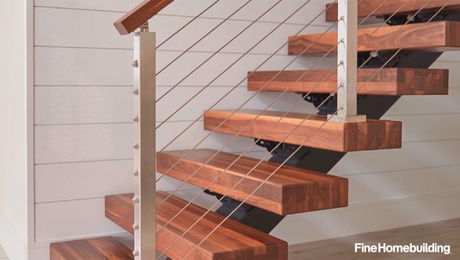I just bought a new old claw foot tub. I have been told that there was one in my house originally and removed in the early 70’s for “upgrading”. My question is how to go about determining if I need to have any reinforcing done so it doesn’t come through to my living room. The house is well over a hundred years old – original hardwood floor and plaster throughout. Do I need a structural engineer?
Discussion Forum
Discussion Forum
Up Next
Video Shorts
Featured Story

Learn more about the benefits and compliance details for the DOE's new water heater energy-efficiency standards.
Featured Video
Builder’s Advocate: An Interview With ViewrailHighlights
"I have learned so much thanks to the searchable articles on the FHB website. I can confidently say that I expect to be a life-long subscriber." - M.K.

















Replies
Being that the house is original, (structure not compromised by previous work, plaster intact) off the top of my head I'd say "go ahead", but you should excersize a little common sense. Are the floors reasonably flat (there will always be some deflection in a house that old) Where are the bearing walls in relation to the bath layout? Is the tub situated on a headered span? (stairwell) Is it in the centre of a span? If you have some knowledge of construction, you can determine the spans, depth of joists, bearing etc. That info. is needed to determine a proper response. I'm assuming that the new bath is going in where the old bath was, which probably had a cast tub, but we're still guessing.
more info, better answers
One important thing is to place steel plates under the feet, unless you have tile or some other hard surface. These are maybe 3" square and 3/32" thick. Stainless is best, obviously, to prevent rust.
I bought some little "coasters" from a piano store for this purpose. They look a little more "finished" than a square piece of plate stock. ;)
(Simplest way to assess the state of the floor supports without tearing out the ceiling below is to jump up and down on the floor. If it seems solid you're probably in good shape, but if it seems shaky you should dig a little deeper.)
I've got one relocated onto a poly'ed original heart-pine floor, and it gets used a good bit; hasn't seemed to dent the floor. No subfloor even in that part of the house. I'd say go for it.
Forrest